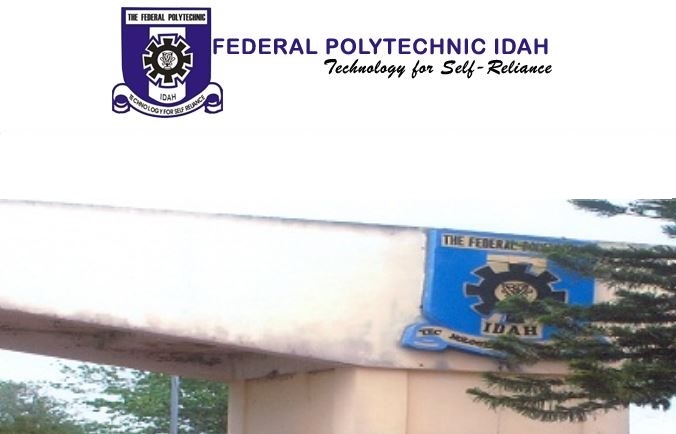
Virginia Tech, also known as Virginia Polytechnic Institute and State University, stands prominently in Blacksburg, Virginia. Renowned for its robust research programs and vibrant campus life, this institution has become a significant choice for students nationwide.
Yet, its relatively high acceptance rate, compared to its competitive stature, raises intriguing questions. This article delves deep into the factors contributing to Virginia Tech’s acceptance rate, offering insights beyond basic statistics.
Why is Virginia Tech Acceptance Rate So High
Virginia Tech, known for its strong academic programs and vibrant campus life, has an acceptance rate that is notably higher compared to its competitive nature. Here are ten reasons explaining why this is the case:
Broad Applicant Pool:
Virginia Tech’s diverse program offerings, including acclaimed engineering, agriculture, and liberal arts, draw a substantial applicant pool, leading to a high number of applications. For instance, in 2021, the university received over 42,000 applications, a significant increase from previous years.
This surge in applications, coupled with the university’s capacity to accommodate a large student body, contributes to its relatively high acceptance rate, which was approximately 64.8% in 2022.
Strategic Yield Management:
Virginia Tech’s yield rate, a crucial factor in admissions strategy, stands at approximately 40%.
This rate significantly impacts the number of acceptances issued. For instance, in the admissions cycle for the Class of 2025, out of the 22,400 students admitted, a yield of 40% implies the university anticipated around 8,960 enrollments.
This yield management helps maintain desired class sizes, balancing between over-enrollment risks and ensuring a robust, diverse student body.
Read Here: why is pomona college acceptance rate so low
Selective Programs vs. Overall Acceptance:
The overall acceptance rate at Virginia Tech masks the selectivity of specific programs.
For example, the College of Engineering is notably competitive, with an acceptance rate of around 18% for its 2022 admissions cycle, contrasting sharply with the university’s overall rate of 64.8%.
Such disparities across departments significantly influence the university’s general acceptance statistics, highlighting the competitive nature of its specialized programs.
State University Mission:
As a land-grant university, Virginia Tech is dedicated to serving a wide demographic in Virginia. This commitment leads to inclusive admissions, aiming to offer educational opportunities to a diverse student body.
For instance, in its efforts to widen access, the university maintains a higher acceptance rate for in-state students, which was 63% compared to 76% for out-of-state applicants in 2021. This policy reflects its mission to prioritize education for residents of Virginia.
Growing Capacity:
Virginia Tech’s expansion in facilities and programs, particularly in research and technology sectors, is evident. For example, the university announced a $1 billion Innovation Campus in Northern Virginia, aiming to increase its student body in tech-focused disciplines.
This expansion aligns with a 2021 increase in enrollment capacity, aiming to accommodate over 37,000 students, compared to 34,400 in previous years, necessitating a higher acceptance rate to fill these new spaces.
Safety School Perception:
Virginia Tech is often viewed as a safety school by high-achieving students, especially in the Northern Virginia region, where it’s common for students to target Ivy League and other top-tier institutions.
This perception leads to a significant number of applications from students using Virginia Tech as a backup option, contributing to its higher acceptance rate. For instance, a substantial portion of the university’s applications come from this region, adding to the overall applicant pool each year.
Balanced Admission Criteria:
Virginia Tech’s admissions process embraces a holistic approach, prioritizing more than just academic scores. Factors like extracurricular involvement, leadership experiences, and personal essays significantly influence acceptance decisions.
For instance, in the 2022 admissions cycle, emphasis on personal qualities and extracurricular achievements led to a diverse class profile, with a significant percentage of students showcasing varied talents and backgrounds, not just high academic scores.
National and International Appeal:
Virginia Tech’s strong reputation across multiple disciplines, particularly in engineering and technology, draws a substantial number of national and international students. In 2021, the university reported that international students comprised about 9.6% of its total enrollment, illustrating its global appeal.
This international recognition contributes to a large applicant pool, leading to a relatively higher acceptance rate to accommodate the diverse student interest from various regions and countries.
Technological and Research Opportunities:
Virginia Tech’s status as a leader in technology and research is a significant draw. For example, in 2020, the university received over $531 million in research expenditures, reflecting its robust research environment.
Such opportunities in cutting-edge fields attract a wide range of students, boosting the applicant pool. This increased interest, particularly in STEM fields, contributes to a higher acceptance rate as the university aims to support the growing demand for tech-based education.
Economic Accessibility:
Virginia Tech offers competitive tuition rates, particularly for in-state students, enhancing its appeal. For the 2021-2022 academic year, the in-state tuition was approximately $13,691, significantly lower than the national average for private institutions.
This affordability makes the university an attractive option for students seeking a quality education without the financial burden often associated with higher education. Consequently, this economic accessibility leads to a larger pool of applicants, influencing the university’s acceptance rate.
Read Here: why is university of kentucky acceptance rate so high
Misconceptions about Acceptance Rate and Quality:
A high acceptance rate should not be mistaken for a lack of quality or competitiveness. Virginia Tech stands out for its:
Exceptional STEM Programs:
Virginia Tech’s STEM programs, particularly in engineering and computer science, stand out nationally. In 2021, its College of Engineering ranked among the top 15 public engineering schools in the U.S. The university’s computer science program has consistently been recognized for its excellence and innovation.
For instance, the average first-year student in these programs in 2021 boasted a GPA above 4.0 and SAT scores in the upper 1300s, reflecting the high caliber of students these programs attract.
Research Opportunities:
As a research powerhouse, Virginia Tech invested over $520 million in research expenditures in 2020 alone, placing it among the leading research institutions in the nation. This investment allows students across various disciplines to engage in cutting-edge research, contributing to significant scientific advancements.
The university’s focus on interdisciplinary research offers students unique opportunities to work on projects at the intersection of multiple fields.
Campus Life and Facilities:
Virginia Tech’s campus blends historic architecture with modern facilities, creating a dynamic environment for students. The university is known for its comprehensive campus amenities, including advanced research labs, a state-of-the-art library system, and recreational facilities.
In 2021, Virginia Tech continued its campus development with new facilities, ensuring that students have access to the best resources for their academic and extracurricular pursuits.
Selective Yet Inclusive:
While maintaining a moderate level of competitiveness, Virginia Tech’s admissions process prioritizes inclusivity. The university seeks a diverse student body, evidenced by the fact that 30% of the 2021 incoming class identified as students of color.
By valuing extracurricular achievements and personal qualities alongside academic performance, Virginia Tech fosters a more varied and dynamic community, with students bringing a range of perspectives and experiences.
Read Here: why is full sail university graduation rate so low
Tips To Secure Admission Into Virginia Tech Programs
Securing admission into a Virginia Tech program requires strategic preparation and a well-rounded application. Here are some essential tips to enhance your chances:
Strong Academic Record:
Aim for a high GPA, particularly in core academic subjects. Virginia Tech values rigorous coursework, so enroll in Advanced Placement (AP), International Baccalaureate (IB), or honors classes if available.
Standardized Test Scores:
If you choose to submit SAT or ACT scores, ensure they align with or exceed the mid-50% range for admitted students. As of 2021, this was around 610-690 for SAT Reading, 600-720 for SAT Math, and 26-32 for the ACT.
Holistic Profile Development:
Engage in extracurricular activities that demonstrate leadership, community involvement, or special talents. Virginia Tech looks for well-rounded individuals who contribute to a diverse campus community.
Personal Statement and Essays:
Write compelling essays that showcase your personality, experiences, and motivations. Use the UT Prosim Profile section to highlight how you align with Virginia Tech’s motto of “That I May Serve.”
Letters of Recommendation:
Although not a primary requirement, strong recommendations can support your application. Choose teachers, counselors, or mentors who can attest to your academic abilities and character.
Demonstrate Interest:
Visit the campus, attend Virginia Tech events, or engage with the university online. While demonstrated interest may not be a formal part of the admissions process, understanding the university culture and ethos can enrich your application.
Early Decision/Early Action:
If Virginia Tech is your top choice, consider applying through Early Decision or Early Action. These options can sometimes increase your chances of acceptance, but be mindful of the binding commitment in Early Decision.
Specialized Program Requirements:
If applying to competitive programs like engineering, ensure your application showcases strength in relevant areas like math and science.
Application Accuracy and Completeness:
Ensure your application is thorough and error-free. Check all deadlines and required materials to submit a complete application.
Career and Future Goals Alignment:
Clearly articulate how your chosen program aligns with your career aspirations and how Virginia Tech will help you achieve your long-term goals.
Financial Planning:
If financial aid is a consideration, apply for scholarships and aid early. Demonstrating you’ve considered the financial aspect of college education can be an indirect positive signal.
Stay Informed and Updated: Keep up with any changes in Virginia Tech’s admissions policies, especially given the evolving nature of college admissions nationally.
Frequently Asked Questions
Is Virginia Tech Difficult to Get Into?
Virginia Tech’s admissions process can be characterized as moderately competitive. While it’s not as selective as Ivy League universities, it maintains a robust standard for admissions.
For the 2022 admissions cycle, the overall acceptance rate was around 64.8%, suggesting that the university is accessible to a significant portion of applicants who meet its criteria.
Why is Virginia Tech so Popular?
Virginia Tech’s popularity stems from several factors:
Strong Academic Reputation: Especially known for its engineering and computer science programs, the university is highly regarded in various academic fields.
Research Opportunities: As a research-intensive university, it offers extensive opportunities for students to engage in groundbreaking projects and work alongside experienced faculty.
Vibrant Campus Life: The university boasts a dynamic campus environment with diverse extracurricular activities and state-of-the-art facilities.
Community and Tradition: Virginia Tech is known for its strong sense of community and school spirit, which resonates with many students.
How Hard is it to Get into Virginia Tech 2024?
Gaining admission to Virginia Tech for the 2024 cycle was moderately challenging. The acceptance rate, which was about 64.8% in 2022, indicates a balanced level of selectivity. Applicants with strong academic records, good test scores (if submitted), and well-rounded extracurricular profiles had favorable chances of admission.
Is Virginia Tech Highly Selective?
Virginia Tech is selective but not to the extent of being considered ‘highly selective’ when compared to more competitive institutions like Ivy Leagues. The university takes a holistic approach to admissions, considering various aspects of an applicant’s profile.
Its acceptance rate suggests that while it maintains high standards, it also offers a fair level of accessibility to prospective students.
Conclusion:
Virginia Tech’s relatively high acceptance rate is multifaceted, encompassing strategic yield management, program-specific selectivity, and its role as a state university. The rate reflects the university’s commitment to educational accessibility without compromising the quality and competitiveness of its programs.
This balance makes Virginia Tech a unique and desirable destination for higher education.




